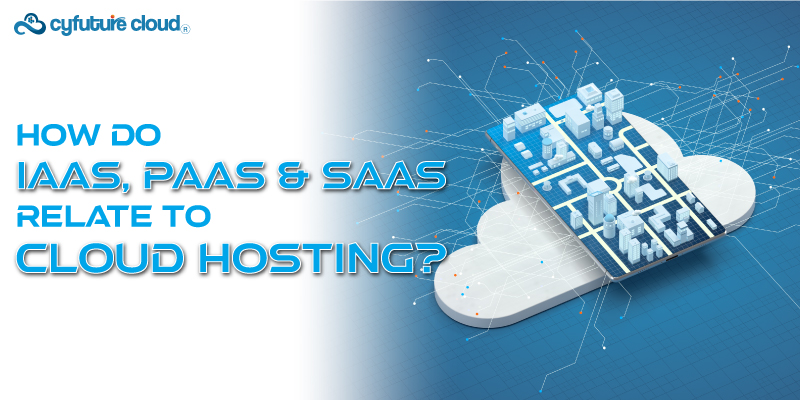 Server
Colocation
Server
Colocation
 CDN
Network
CDN
Network
 Linux Cloud
Hosting
Linux Cloud
Hosting
 VMware Public
Cloud
VMware Public
Cloud
 Multi-Cloud
Hosting
Multi-Cloud
Hosting
 Cloud
Server Hosting
Cloud
Server Hosting
 Kubernetes
Kubernetes
 API Gateway
API Gateway

“IaaS, PaaS, and SaaS are cloud computing models that offer different levels of service. IaaS provides virtualized computing resources, PaaS offers a platform for app development, and SaaS delivers software applications over the Internet. Together, they provide flexible and scalable solutions for various business needs in cloud hosting.”
Three cloud computing models are infrastructure as a Service (IaaS), Platform as a Service (PaaS), and Software as a Service.
Each plays an integral part in cloud hosting. Let's examine how the three pillars of cloud computing interact inside cloud hosting.
Let’s get started!
IaaS sets the system for cloud facilitation by providing virtualized computing assets through the Web. It incorporates servers, capacity, organization, and other essential foundation components.
IaaS permits clients to scale assets based on request, thereby allowing them to pay for what they effectively use. Ventures utilizing IaaS benefit from lower foundation costs since they maintain a strategic distance from contributing to equipment and related upkeep costs.
Besides, IaaS encourages adaptability and agility. In this way, engaging organizations to instantly adjust to moving trade exigencies without the burden of equipment management.
PaaS has a level over IaaS, outfitting a stage that empowers designers to manufacture, deliver, and regulate applications without affecting the fundamental foundation.
PaaS suppliers offer improvement instruments, databases, middleware, and subordinate assets vital for application advancement and arrangement endeavors. An essential advantage of PaaS lies in its effort to streamline the improvement handle. Engineers use pre-existing components and systems outfitted by the stage. Moreover, PaaS empowers collaboration among advancement cohorts and encourages the hones of nonstop integration and delivery.
SaaS is the apex of deliberation in cloud computing. It offers computer program applications by means of the Web on a membership premise. Conclusion clients utilize a web browser or API to get to SaaS apps, dispensing with neighborhood computer program establishment or upkeep requirements.
SaaS offers businesses several benefits, including fetch decreases, programmed overhauls, and omnipresent availability over internet-connected gadgets. Examples of SaaS applications incorporate CRM frameworks, efficiency suites, and venture asset management (ERP) software.
Let's look at their connection inside the cloud-facilitating architecture.
The foundational framework for both PaaS and SaaS is IaaS. The virtualized assets given by IaaS suppliers are basic to the victory of both PaaS and SaaS. Building on IaaS, PaaS offers an application improvement and sending stage. IaaS assets are utilized by designers to build and have their apps, permitting them to concentrate completely on the usefulness and rationale of the applications.
SaaS gives clients access to fully working computer program applications by combining IaaS and PaaS. These applications may utilize administrations and improvement instruments provided by PaaS suppliers and run on IaaS infrastructure.
IaaS, PaaS, and SaaS collaborate agreeably to empower cloud-facilitating arrangements. Whether one is a person engineer, a juvenile startup, or a corporate behemoth, comprehending how these benefit models dovetail with cloud facilitating can cause reasonable decision-making vis-à-vis the appropriation of cloud technologies.
Foundation as a Benefit (IaaS) collects plenty of benefits for businesses over the spectrum:
Adaptability: IaaS enables businesses to easily scale their foundation. This versatility accepts increased centrality for ventures encountering exponential development or swaying demand.
Fetched Reserve funds: By leveraging a virtualized framework, businesses can effectuate considerable diminishments in forthright and progressing foundation costs. With IaaS, organizations exclusively compensate for the assets they effectively utilize, rendering it a cost-efficient proposition.
Adaptability: IaaS permits businesses to cherry-pick the particular framework components they require, be it servers, capacity, organizing, or subordinate assets. This adaptability encourages the customization of the framework to cater to organizations' unmistakable imperatives
.
Platform as a Service (PaaS) confers its own set of advantages: In this case, the security of an individual’s information is not guaranteed as it would be in a traditional computer system.
Time to Market: A PaaS speeds up the application development lifecycle by offering developers pre-built tools, frameworks, and services. This speeds up development cycles. That means enterprises can release new applications faster and better.
Streamlined Product: Developers do not need to worry about the underlying infrastructure. Because they can focus on coding and application development. PaaS vendors take over some responsibilities, such as provisioning, scalability, and maintenance.
Cooperation and Integration: PaaS enables cross-team collaboration by providing shared development environments and tools. In addition, PaaS systems are often connected to other cloud services and tools that can be easily integrated into the existing processes.
However, SaaS has benefits both to the end-users and businesses. Let’s look at a few advantages:
Accessibility: SaaS apps can be accessed from any device that is connected to the internet, and as a result, users are able to access their information or applications whenever they want, regardless of where they may be. This accessibility increases efficiency and collaboration, particularly in decentralized or distant work environments.
Automatic updates: SaaS vendors take care of all software updates and maintenance tasks. This means that users always have access to the latest features and security patches. Manual upgrades are eliminated, reducing the risk of downtime and security issues.
Cost-Effectiveness: SaaS pricing is based on a subscription model, which can be per user or monthly. The predictable pricing model allows the program to scale.
Let’s conclude the topic. IaaS, PaaS, and SaaS are more than just buzzwords in cloud computing. They represent powerful tools and technologies that enable organizations to achieve their goals. Organizations can unleash the full potential of cloud hosting and establish their dominance in the digital environment.

Let’s talk about the future, and make it happen!
By continuing to use and navigate this website, you are agreeing to the use of cookies.
Find out more



